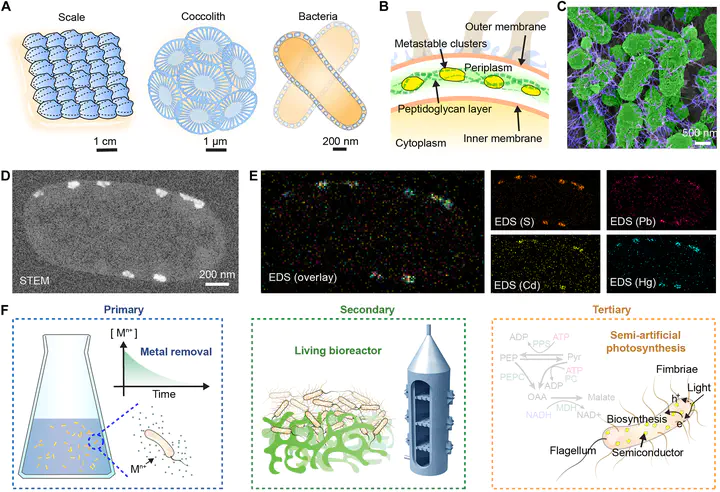Our research paper on Semiconductor-Microbe Living Hybrids is published in Science Advances!

Our research paper on Semiconductor-Microbe Living Hybrids is published in Science Advances! Check the link https://www.science.org/doi/10.1126/sciadv.adg5858
Semiconductor-based biointerfaces are typically established either on the surface of the plasma membrane or within the cytoplasm. In Gram-negative bacteria, the periplasmic space, characterized by its confinement and the presence of numerous enzymes and peptidoglycans, offers additional opportunities for biomineralization, allowing for nongenetic modulation interfaces. We demonstrate semiconductor nanocluster precipitation containing single- and multiple-metal elements within the periplasm, as observed through various electron- and x-ray-based imaging techniques. The periplasmic semiconductors are metastable and display defect-dominant fluorescent properties. Unexpectedly, the defect-rich (i.e., the low-grade) semiconductor nanoclusters produced in situ can still increase adenosine triphosphate levels and malate production when coupled with photosensitization. We expand the sustainability levels of the biohybrid system to include reducing heavy metals at the primary level, building living bioreactors at the secondary level, and creating semi-artificial photosynthesis at the tertiary level. The biomineralization-enabled periplasmic biohybrids have the potential to serve as defect-tolerant platforms for diverse sustainable applications.